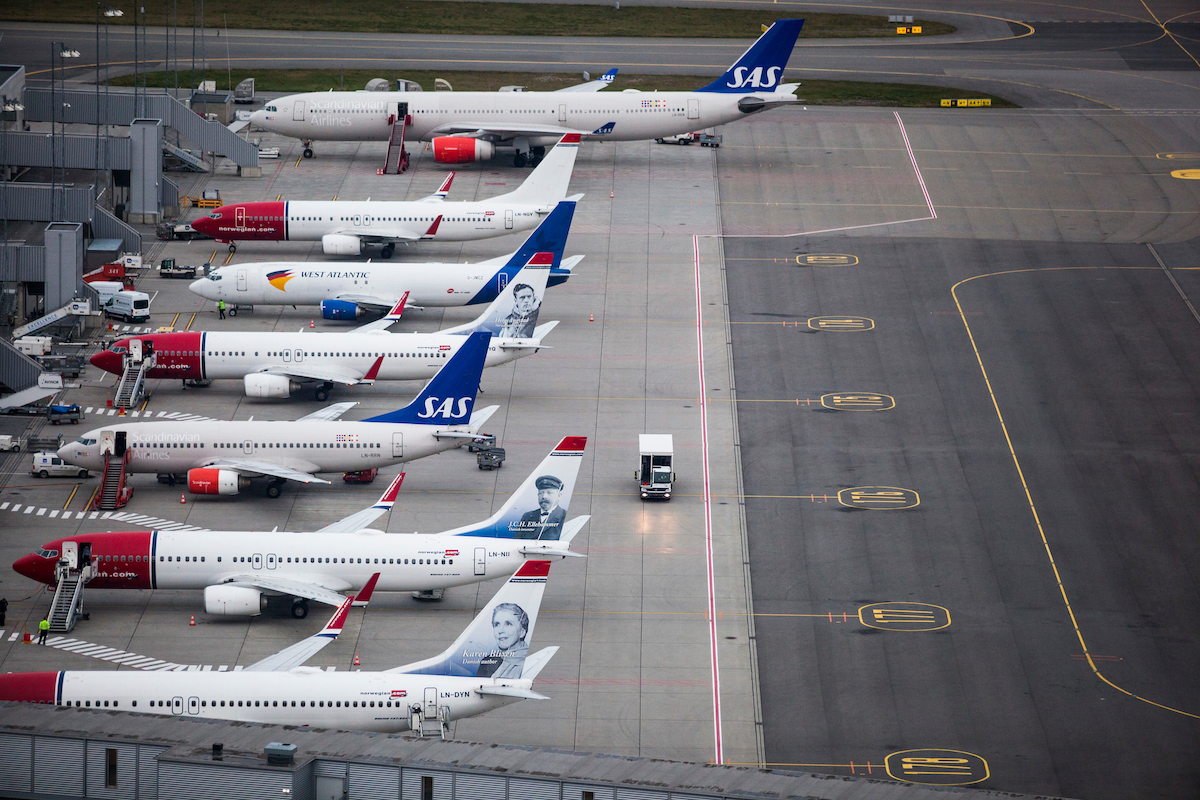Norwegian Air Boosts Loyalty Investments to Capture More Corporate Travel Share

Photo Credit: Avinor / CatchLight Fotostudio AS
Norwegian Air has come back strong from the brink of death. After struggling before the pandemic and then restructuring during it, the discounter has rebounded quickly with an eye on taking competitor SAS's lucrative corporate travel market.
In the fourth quarter, Norwegian Air saw corporate travel revenues increase 52 percent from the quarter before, hitting 90 percent of 2019 levels, CEO Geir Karlsen said during the airline's latest earnings call Thursday. This continued the trend it saw during the third quarter. In his view, Norwegian Air's share gains are the result of offering a better product and on-time performance than its competitors. The carrier did not disclose the amount of revenue that came from corporate travelers in the fourth quarter; total revenues for the period were nearly 5 billion Norwegian kroner ($487 million).
While Karlsen did not name names, Norwegian Air only has one major competitor in its home market: SAS. The legacy carrier is restructuring through the Chapter 11 bankruptcy process in the U.S., and faced numerous disruptions in the second half of 2022, including a pilot strike. Budget competitor Flyr shut down in January, and regional airline Widerøe is a partner with which Karlsen said Norwegian Air is deepening its relationship.
"More and more of [big corporates] are now saying that more than 50 percent of their employees are now flying with Norwegian," Karlsen said.
How then, with corporates increasingly booking their roadwarriors on Norwegian Air, does the airline plan to keep moving the needle in its favor? By taking its loyalty program, Norwegian Reward, to the "next level," Karlsen said.
Norwegian Air plans to unveil a new top tier to its loyalty program in the coming weeks that targets very frequent flyers, or those who fly more than 32 times a year. This tier will include, as Karlsen put it, "all the benefits," ranging from free bags and seat assignments to priority check in and boarding. But the plans do not stop there, the carrier is working to expand Norwegian Reward into something bigger than just an airline loyalty program with multiple partners in multiple consumer-facing industries.
"The ambition now is to create the best loyalty program in the Nordics, independent of industry," Karlsen said. He added that the additional benefits and partners will "attract even more of the corporate travelers."
Loyalty programs are increasingly big business for airlines. In the U.S., Delta Air Lines, which is at the forefront of developing loyalty revenues, generated $5.5 billion — or 11 percent of total revenues — from just its co-branded credit card with American Express in 2022. "SkyMiles is one of our superpowers," Delta President Glen Hauenstein said in December. And SAS has repeatedly highlighted in its restructuring the value of its loyalty program, SAS EuroBonus, as a core asset.
Norwegian Air's investment in its loyalty program is likely to make it a stronger competitor to SAS. Norwegian Reward currently has limited applicability outside of the airline, with partners limited to Avis rental cars, Hotels.com, and a few other Nordic parking and travel companies. SAS' Eurobonus, by contrast, benefits from the airline's membership in Star Alliance that gives members access to flights around the world, as well as at least seven rental car and six hotel partners.
The "net effect should be highly positive," Pareto Securities analyst Kenneth Sivertsen said of Norwegian Air's loyalty investments on Thursday.
Travel demand, both leisure and corporate, continues to be robust for Norwegian Air with strong early bookings for summer travel. Its strongest markets are Norway and Denmark, as well as flights to European beach markets, Karlsen said. Demand in Finland and Sweden is “more challenging,” he added. Norwegian Air faces competition not only from SAS, but also Eurowings, Finnair, and Ryanair in these challenging markets.
Norwegian Air plans to fly 81 Boeing 737 aircraft during the summer peak. That's down from plans to fly 85 aircraft because of delivery delays at Boeing, Karlsen said. The 81 number includes six former-Flyr 737-8s that Norwegian Air has leased from Air Lease Corp. The airline plans to operate 77 aircraft by the end of the year after returning some planes to lessors.
Looking forward, Norwegian Air plans to increase capacity by 24 percent year-over-year in 2023. Yields are forecast to increase compared to 2022 but Karlsen declined to be more specific on the growth. And unit costs (CASK) excluding fuel are expected to come down 5-10 percent compared to last year.
Norwegian Air reported a 39 million Norwegian kroner operating loss, and a negative 0.8 percent operating margin, in the fourth quarter. Total yields increase 14 percent year-over-year, while CASK excluding fuel decreased 5 percent.
For all of 2022, Norwegian Air reported a 1.5 billion Norwegian kroner operating profit. However, without the benefit of one-time items in the second quarter, the airline would have lost money last year.
